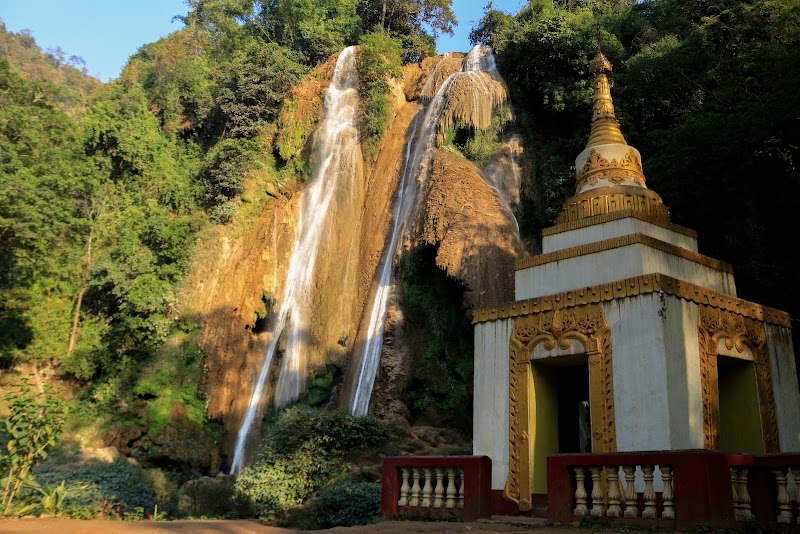
Experience Shwebo’s Pagoda Festivals, where ancient Burmese culture and spirited festivities converge beneath towering temple spires. This guide offers practical tips and vivid insights to prepare you for a journey through one of Myanmar’s most engaging cultural celebrations.
Wear Sturdy Footwear
Festival grounds have uneven stone and earth paths. Shoes with good traction will prevent slips and keep you comfortable walking between pagodas.
Stay Hydrated
Temperatures can rise during the day, so carry a refillable water bottle to avoid dehydration while exploring the festival sites.
Dress Respectfully
Wear modest clothing covering shoulders and knees, respecting religious sites and local customs throughout the festival.
Visit During Dry Season
Plan your trip between November and February when weather conditions are optimal and festival activities are at their peak.
Vibrant Rhythms of Shwebo Pagoda Festivals: A Cultural Adventure in Sagaing
Shwebo, in the Sagaing Region of Myanmar, pulses with energy during its famous Pagoda Festivals, a tradition that transforms the town into a hub of vibrant celebration and cultural depth. These festivals revolve around the historical pagodas scattered around the city, with Shwebo being the ancient capital known for its role in Burmese history and Theravada Buddhism. The experience offers an enriching mix of local devotion, lively performances, and communal feasts.
The heart of the festival is the pagoda grounds, where the air carries the scent of blooming frangipani and burning incense, competing with the deep sound of traditional drums. Stalls line the temple courtyards, offering snacks, souvenirs, and religious items, while locals and visitors participate in offerings and prayers. The festival atmosphere is lively but grounded, inviting all to witness and engage with Myanmar's living heritage.
Timing your visit is crucial. The main festivals often take place during the dry season, from November to February, when the weather is cooler and less humid, ideal for exploring on foot. The celebrations vary in scale but usually involve processions of monks, traditional dance troupes, and rituals that offer windows into Burmese spirituality and community bonds.
Practical considerations enhance the experience. The festival areas typically involve walking on uneven stone and packed earth pathways, sometimes stretching across several pagodas within Shwebo’s old city layout. Comfortable, well-gripping footwear is a must. As many visitors participate throughout the day into evening, bring a reusable water bottle and stay hydrated, especially in the midday sun. Modest attire is respectful and recommended when visiting religious sites.
Beyond the human celebrations, the environment plays a subtle yet significant role. The ancient teak trees seem to witness the festivities, their branches rustling like whispered encouragement. Canal waters nearby murmur softly, creating an ambient soundtrack that shifts with the breeze and time of day.
For adventurers, the festival offers more than cultural immersion—it's an opportunity to step into a rhythmic cycle that bridges centuries, a charged interplay between past traditions and present enjoyment. Planning to coincide your visit with one of the pagoda festivals transforms what might be a typical cultural tour into a lively, interactive experience where history, nature, and community come alive in real time.
Nearby Trips
All Adventures
Boat Charters
Water Activities
Adventures near Shwebo, Sagaing
Discover the unique and memorable adventures that make Shwebo, Sagaing special.
Frequently Asked Questions
What is the historical significance of the pagodas in Shwebo?
Shwebo was the capital of the Konbaung Dynasty, and its pagodas represent a pivotal era in Burmese history, serving both religious and political functions. Many date back to the 18th century, reflecting the fusion of royal patronage and Theravada Buddhism.
Are the Shwebo Pagoda Festivals family-friendly?
Yes, the festivals are welcoming to families with children. There are often performances, food stalls, and safe communal spaces, though parents should watch for crowded areas.
What wildlife might visitors notice during the festival?
While primarily urban, the pagoda grounds and surrounding gardens attract birds like mynas and bulbuls. The occasional monitor lizard or dragonfly is also spotted enjoying the quieter corners.
Are there any quieter areas to experience the festival away from crowds?
Yes, some smaller pagodas on the outskirts of Shwebo’s historic district offer a more peaceful atmosphere, perfect for reflection and photography without the bustle.
What environmental practices are encouraged during the festivals?
Visitors are encouraged to minimize plastic waste by using reusable bottles and bags and to respect temple grounds by not littering or disturbing sacred spaces.
How can I best capture the festival’s atmosphere in photos?
Early mornings and late afternoons provide soft natural light on the pagodas and festivities, with vibrant market stalls and processions offering excellent dynamic subjects.
Recommended Gear
Comfortable Hiking Shoes
Essential for stable footing on uneven ground and long hours exploring festival sites.
Reusable Water Bottle
Staying hydrated is crucial during dry season festivals, especially in midday heat.
Lightweight Long Sleeve Shirt
Protects skin from sun exposure while respecting local modesty customs.
Portable Umbrella or Raincoat
Useful during unexpected showers, especially in transitional seasons or summer afternoons.
Local Insights
Hidden Gems
- "Mya dein Pagoda’s serene pond-side setting"
- "Early morning views from the ancient city walls"
- "Traditional lacquerware workshops near the festival grounds"
Wildlife
- "Common myna birds"
- "Oriental magpie-robin"
- "Dragonflies by temple ponds"
History
"Shwebo’s role as the birthplace of the Konbaung Dynasty deeply informs the festival’s scale and rituals, bridging centuries-old monarchy traditions with modern Burmese devotion."
